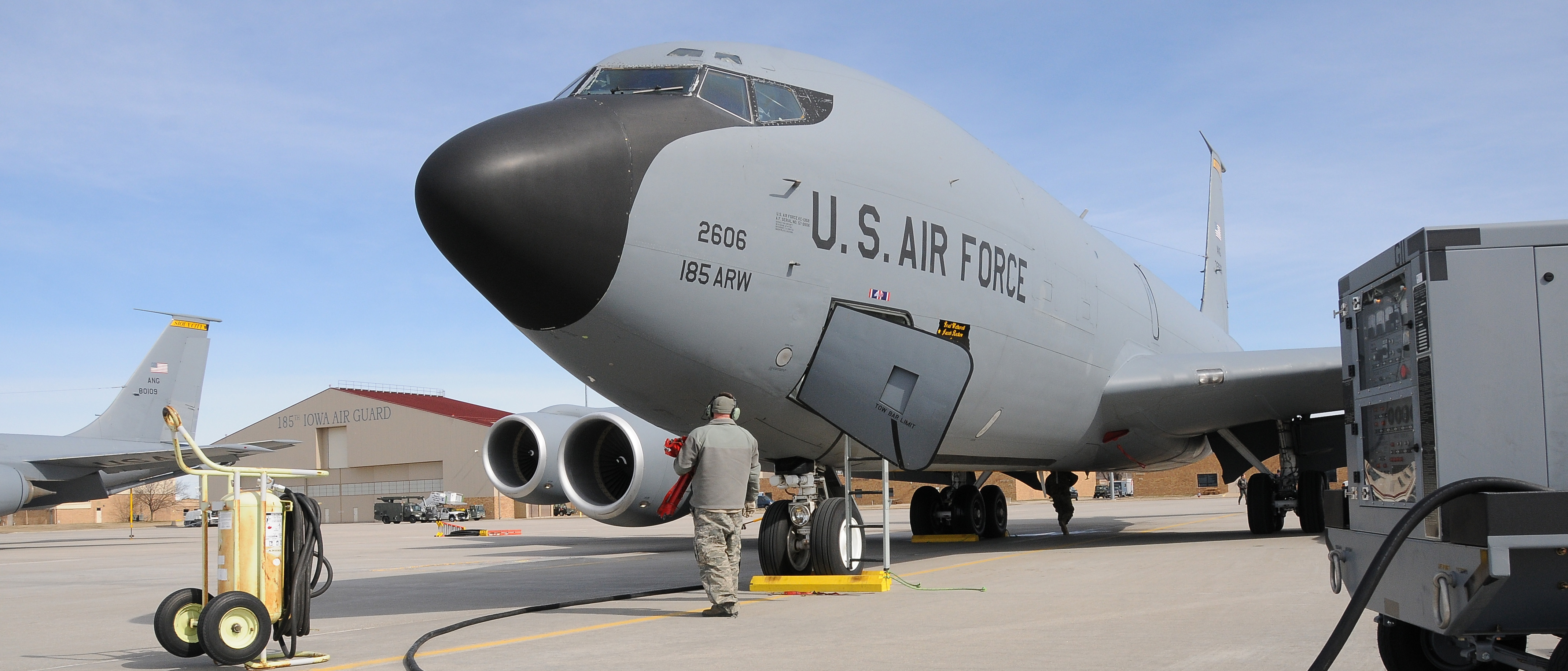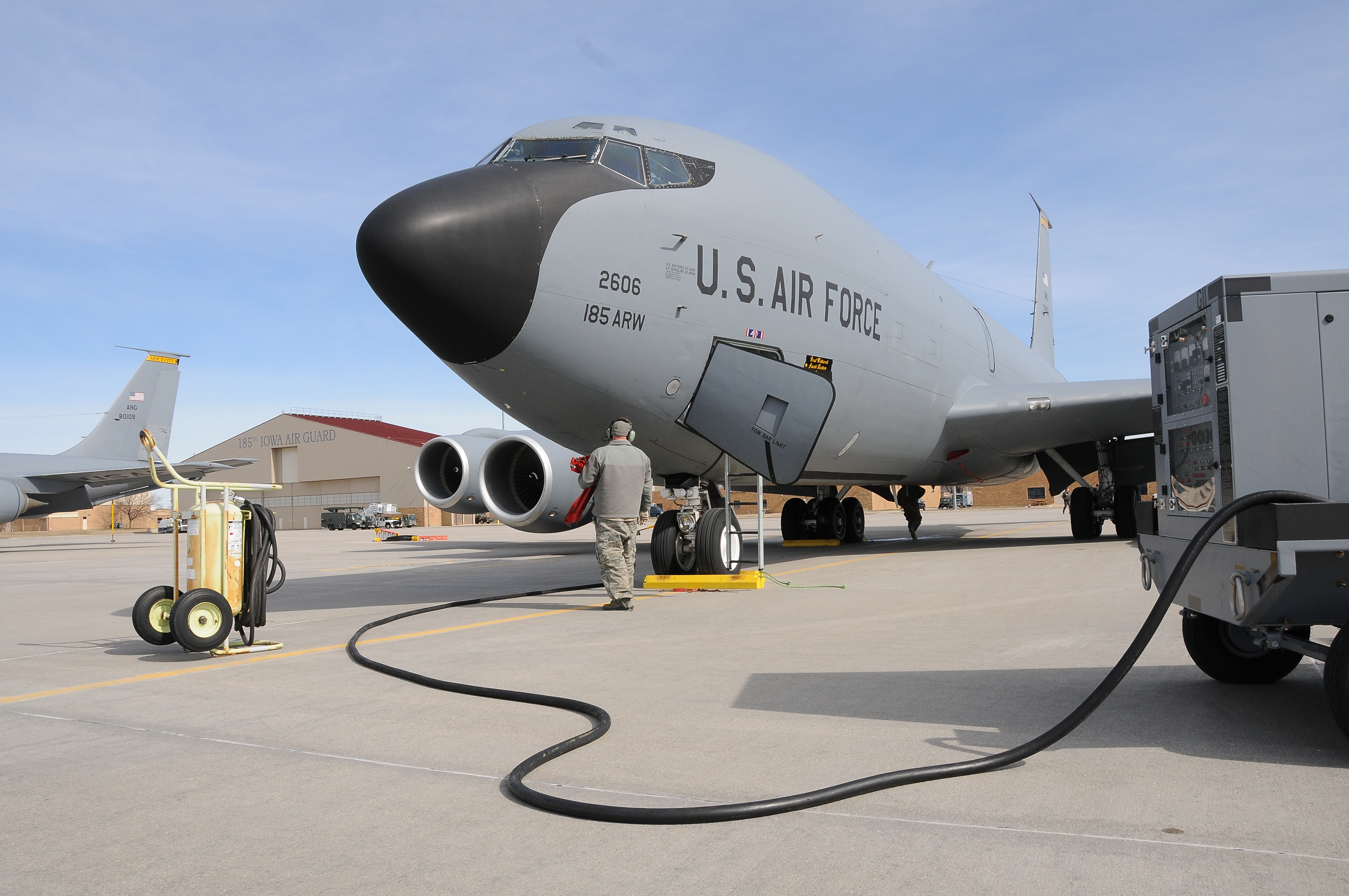
In-flight emergencies occur infrequently on military aircraft, but when they do happen, flight crews must be able to quickly diagnose the problem and determine what action to take.

An electronic Quick Reference Handbook (QRH) could soon give crews of KC-135 Stratotankers an app-based resource to help them quickly diagnose problems and identify solutions using electronic checklists. The software runs on tablet computers and uses a crew-centric human factors approach with an interface similar to the search engines already widely used by consumers.
Developed by researchers at the Georgia Tech Research Institute (GTRI) in collaboration with the Air National Guard (ANG), the QRH has been released for training among ANG KC-135 crews, part of an evaluation that will lead to a planned release for operational use in the aircraft – and potential wider applications. The work has been supported by the U.S. Air Force’s Air Mobility Command, the Aircraft Systems Special Programs Office, and the ANG.
Providing Searchable Information as Needed
“The overarching goal of the electronic checklist is to provide quick, actionable steps for the crew to maintain aircraft control, identify and rectify the non-normal situation if possible, and provide guidance on how to configure the aircraft for landing if necessary,” wrote the authors of a recent paper about the project. “The new format follows the streamlined, quick-response handbook format and presents only relevant information to crews as they need it. The checklists are searchable, reliable, and provide consistent information to the crews.”
Before the creation of the QRH, crews had to consult a more than 300-page section of a paper-based flight manual to identify and apply the correct emergency procedure for a problem an aircraft was experiencing in flight. The original paper documentation was written from an engineering perspective and often focused on the root technical causes of the problem rather than the symptoms the crew was dealing with. Because it included revisions from 60 years of updates to the aircraft, the manual could be difficult to use in emergencies.
Building on a Need Identified by Air Crews
In 2011, Lt. Col. Matt Boyle, a KC-135 pilot with the Ohio Air National Guard, began the process of adapting the paper emergency procedures to an electronic format that would utilize modern search technology. Building on his work, which grew out of a safety study, GTRI researchers became involved through the Advanced Airlift Tactics Training Center (AATTC) in St. Joseph, Mo. GTRI expanded the size of the team working on the project, and brought in human-factors experts to help apply knowledge of how aircrews deal with emergencies and search for information.
“We worked with KC-135 subject matter experts, and they helped us understand what should be done,” said Cara Bailey Fausset, a GTRI senior research scientist who’s studied how humans interact with technology. “We applied human factors principles on how people learn and behave, and how to communicate with them.”
Electronic Searching Identifies the Right Checklist
The result is a new tablet-based system that allows aircrews to search emergency procedures by the problem they are observing as well as by the root cause – if it is known. For instance, what to do in case of an “engine failure” can be identified by searching for that term, or by searching for “compressor stall,” which may be the technical cause. Both search terms lead to the same checklist that crews can use to address the problem. The QRH also explains the meaning behind indicator lights, messages, and alerts that crews may receive from aircraft systems.
“We know who our users are, and they are pilots and boom operators,” said Fausset. “We needed the manual and procedures to be delivered in their language and the way they would think and talk about a problem, organized in a way that would be useful to them.”
Consolidating Emergency Procedures for Quicker Results
While building the new app, GTRI worked with Boyle and other KC-135 subject matter experts to reorganize and consolidate what had been 351 sometimes redundant emergency procedures down to just 175. They created a question-and-answer format to help the aircrew confirm that they had selected the correct emergency procedure. Reducing the number of procedures helps the aircrew find the cause and solution more quickly using the QRH search bar.
“We tried to make this useful for both experienced crew members and for newer crew members,” Fausset said. “A crew member shouldn’t have to work harder than necessary in a stressful situation. The information is in the original flight manual, but it can be hard to find quickly.”
Describing How In-flight Emergencies Affect Flight
Beyond identifying the cause of the problem and potential solutions, the QRH describes how the aircraft might behave differently with whatever technical issue caused the non-normal situation.
“If you lose a hydraulic system or an electrical system, that changes the operational limits for the aircraft,” explained Bayne Meeks, a GTRI principal research engineer who has flown military transport aircraft as well as commercial Boeing 737s. “The system can remind the crew how these will affect the aircraft upon landing or approach. It may mean that they don’t have normal braking or the use of spoilers, all factors that must be accounted for while preparing for landing.”
After developing the app based on consolidated emergency procedures, new checklists, and new titles, the human factors researchers also rewrote the emergency procedures section of the paper flight manual to make the two formats consistent.
“You can read the information that supports what you are doing,” said Meeks. “Having that information available continues to build the knowledge base.”
QRH in Evaluation to Prepare for Adoption
The QRH was designed to operate on the Apple iPad, but could also be ported to Android-based tablets in the future. After initial deployment across the KC-135 fleet, the QRH team plans to modify the QRH software so that it can be more easily updated by the military’s software maintenance system via a dev/sec/ops environment. The team has been awarded a GTRI Independent Research and Development task to complete this work. Meeks and Fausset hope the format will be used on other aircraft.
“We could take the C-130 and C-17 procedures and populate the same framework,” said Meeks. “We also want to continue supporting software sustainment and adding new functionality and features for the government.”
The KC-135 is used by the Air National Guard and the U.S. Air Force for aerial refueling of other aircraft. It is flown by a crew that consists of a pilot; co-pilot; and boom operator, who directs the refueling operations. The four-engine tanker is based on the airframe of the Boeing 707, so most of the KC-135s are over 60 years old.
“The aircraft has been updated over time, and now has new avionics and other systems,” Fausset noted. “This project will help keep the emergency procedure information up-to-date to ensure continued safe and efficient operation of the KC-135.”
In addition to those already mentioned, a talented and dedicated project team with its roots beginning in April 2014 is at the heart of this effort. Additional GTRI researchers and students include Elizabeth Weldon, Latrice Williams, Cody Fernandez, Noah Chong, Neil Bhadslave, Ishaan Guha, Jim Dudgeon, Buddy Ray, Ben Burkett, Chandler Price, Regina Willen, Chris Hale, Courtney Crooks, Stuart Michelson, Emily Brooks, and Marcia Crosland. Additional KC-135 subject matter experts include Kevin Cartwright, Mark Robinson, Alex Bruzzano, and Joe Bosch.
Writer: John Toon (john.toon@gtri.gatech.edu)
GTRI Communications
Georgia Tech Research Institute
Atlanta, Georgia USA
MORE 2022 ANNUAL REPORT STORIES
MORE GTRI NEWS STORIES
The Georgia Tech Research Institute (GTRI) is the nonprofit, applied research division of the Georgia Institute of Technology (Georgia Tech). Founded in 1934 as the Engineering Experiment Station, GTRI has grown to more than 2,800 employees supporting eight laboratories in over 20 locations around the country and performing more than $700 million of problem-solving research annually for government and industry. GTRI's renowned researchers combine science, engineering, economics, policy, and technical expertise to solve complex problems for the U.S. federal government, state, and industry.





